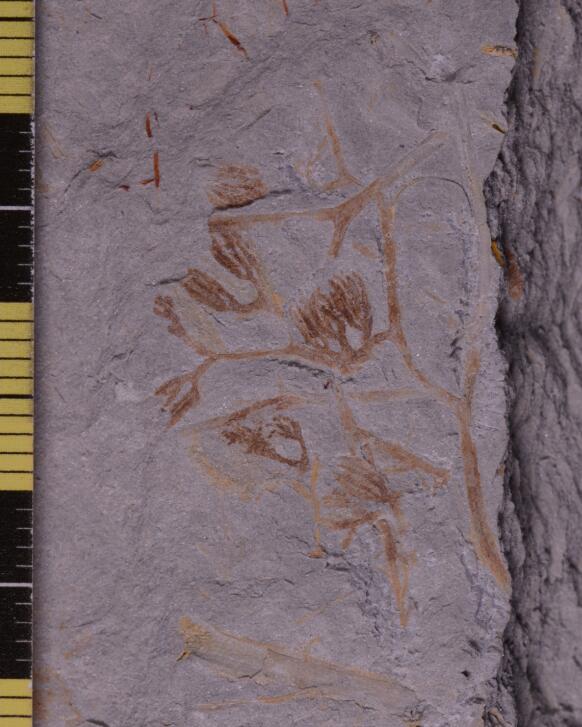
The euphyllophyte Pauthecophyton sp. from the Lower Devonian Yangling Psephyte, Chongyi, Jiangxi Province, China
The South China Plate, being situated at the periphery of the Gondwana supercontinent in the Paleozoic, was formed by the Neoproterozoic (ca. 850-820 Ma) amalgamation of the Yangtze and Cathaysia blocks, both of which belonged to a unified continental terrane and between which there was an epicontinental sea during the Paleozoic. A major geological event in the South China Plate was recognized by angular unconformities or disconformities between the Devonian and the Lower Paleozoic (early Silurian and pre-Silurian) strata. The corresponding unconformity separates the Lower and Upper Paleozoic strata and represents the surface of the tectonic event known as the Kwangsian Orogeny, which was thought to be the Caledonian Orogeny occurring in the South China Plate.
The process of the Kwangsian Orogeny, especially its uplift movement pattern during the tectonic events across the Cathaysia Block, was analyzed based on Ordovician biofacies and lithofacies and revealed that the Kwangsian Orogeny originated along the southeast coast of China in the Ordovician and developed stepwise in a northwest direction. However, the deposition process after the Kwangsian Orogeny is still poorly understood for the reason of rare fossil records or poor horizons recognized overlying the Kwangsian Orogeny deposits. As a result, when and how did the Devonian transgression and deposition occur are not known yet. The study on Devonian plants and near-shore depositions is required to solve the problem.
Recently, the Devonian work group of Nanjing Institute of Geology and Palaeontoloy, Chinese Academy of Sciences, led by Prof. Xu Hong-He, including Prof. Wang Yi, Dr. Tang Peng, Dr. Fu Qiang and PhD student Wang Yao, for the first time, discovered the typical Lower Devonian plants from the Yangling Psephyte, Chongyi, southern Jiangxi Province, China, which palaeogeographically belongs to the Cathaysia Block of the South China Plate. As a result, the Yangling Psephyte is dated as Pragian (Early Devonian). Additionally, combined with 23 horizons and 52 Devonian plant fossil localities in southern China reported in previous studies, the stepwise pattern of Devonian transgression and deposition after the Kwangsian Orogeny is recognized. It is indicated that the transgression and deposition started no later than the Pragian Stage, continued until at least the Late Devonian and gradually strengthened northeastwards from the Early Devonian to the Late Devonian.
Mr. Lei Han-Sheng and Chongyi Geology and Mineral Bureau, Jiangxi Province are grateful for help in fieldwork in the Yangling National Geopark. The study used Devonian plant fossil records to discuss the reginal geology and related palaeogeographical issues and is online published in Palaeogeography, Palaeoclimatology, Palaeoecology, as below.
Download:
